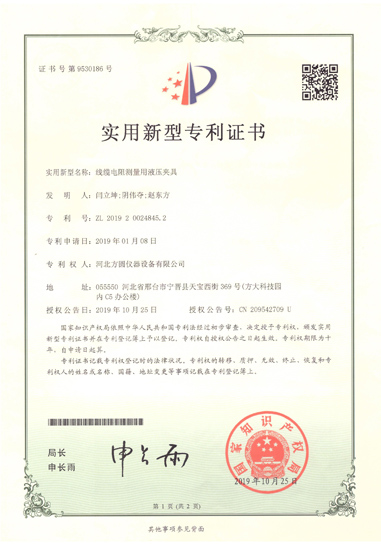Winding and Torsion Assessment Equipment for Material Strength Evaluation
Understanding Winding and Torsion Testing Machines Key Features and Applications
In the world of material science and engineering, testing plays a critical role in determining the strength and reliability of materials and components. Among the various testing methods employed, winding and torsion testing are essential for understanding how materials behave under specific stresses. Winding and torsion testing machines are sophisticated instruments designed to evaluate the performance of materials and finished products across numerous industries, including aerospace, automotive, and manufacturing.
What is a Winding and Torsion Testing Machine?
Winding and torsion testing machines are specialized equipment that apply controlled mechanical forces to materials and components. These machines assess how materials react when subjected to torsional (twisting) and bending forces, providing valuable data on their mechanical properties, such as tensile strength, flexibility, and fatigue resistance.
Typically, these machines consist of an actuator that can twist or bend the specimen while measuring the resulting load and deformation. The outputs collected are crucial for researchers and engineers to understand material performance, predict failure, and design safer, more efficient products.
Key Features of Winding and Torsion Testing Machines
1. Precision Measurement Systems Modern testing machines are equipped with high-precision load cells and transducers that ensure accurate measurements of force and displacement. This capability is crucial for obtaining reliable data that can influence design decisions.
2. User-Friendly Software State-of-the-art winding and torsion testing machines come with sophisticated software that allows users to set up tests easily, monitor real-time data, and analyze results instantaneously. These software solutions often include advanced analytics that enhance the understanding of material behavior.
3. Versatility These machines are designed to accommodate a wide range of specimen sizes and shapes, from small wires to large structural components. This versatility is particularly valuable in research and development settings where various materials are tested.
4. Programmable Testing Protocols Users can program complex testing sequences that simulate real-world application conditions. This feature is particularly important for industries where materials are subjected to varying loads and stresses during their lifecycle.
winding and torsion testing machine

5. Compliance with Standards Winding and torsion testing machines are often built to comply with industry standards, such as ASTM and ISO. This compliance ensures that the testing process meets legal and performance regulations, which is critical for product certification.
Applications of Winding and Torsion Testing Machines
The applications of winding and torsion testing machines are extensive and span across various sectors
- Aerospace Industry In aerospace, materials are subjected to extreme conditions during flight. Winding and torsion testing machines help identify weak points in materials used in aircraft components, ensuring that safety and performance standards are met.
- Automotive Sector Automotive parts, such as springs, shafts, and connectors, require rigorous testing to withstand the stresses of operation. These machines can simulate the forces acting on components during use, ensuring durability.
- Manufacturing and Material Development Engineers often utilize these machines to develop new materials or improve existing ones. By understanding how different compositions react under stress, manufacturers can innovate with confidence.
- Construction and Infrastructure Materials used in construction, such as steel cables and reinforced concrete, need to be tested for strength and resilience. Winding and torsion testing helps in evaluating the performance of these materials to enhance infrastructure safety.
Conclusion
Winding and torsion testing machines play an indispensable role in the evaluation and development of materials across various industries. With their advanced features, they provide critical insights into material behavior, enabling engineers and researchers to make informed decisions. As technology continues to advance, the capabilities of these machines will expand, further enhancing our understanding of materials and leading to safer, more effective products in an ever-evolving market. By investing in high-quality testing equipment, companies can secure a competitive edge and ensure they deliver reliable and safe products to consumers and industries alike.
-
Why the Conductor Resistance Constant Temperature Measurement Machine Redefines Precision
NewsJun.20,2025
-
Reliable Testing Starts Here: Why the High Insulation Resistance Measuring Instrument Is a Must-Have
NewsJun.20,2025
-
Flexible Cable Flexing Test Equipment: The Precision Standard for Cable Durability and Performance Testing
NewsJun.20,2025
-
Digital Measurement Projector: Precision Visualization for Modern Manufacturing
NewsJun.20,2025
-
Computer Control Electronic Tensile Tester: Precision and Power for the Modern Metal Industry
NewsJun.20,2025
-
Cable Spark Tester: Your Ultimate Insulation Assurance for Wire and Cable Testing
NewsJun.20,2025
 Copyright © 2025 Hebei Fangyuan Instrument & Equipment Co.,Ltd. All Rights Reserved. Sitemap | Privacy Policy
Copyright © 2025 Hebei Fangyuan Instrument & Equipment Co.,Ltd. All Rights Reserved. Sitemap | Privacy Policy
